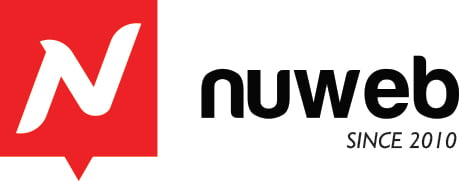Google officially said, “Provide high-quality material. This is the single most valuable thing to do.” And that is valid of all kinds of material on the Internet, be it email, video or something else. Search engines are developing to root out premium information from the stack and provide rich results to consumers.
When it comes to images, those with strong quality can inevitably surface beyond the average baseline content. So, long when you start leveraging search engines, first make sure the material is top notch.
The quality factor can be managed throughout the video development process, and once your video is ready, mark this SEO optimization checklist to offer the extra boost to the search engine to render your video much more discoverable.
1. Optimize photos for SEO and the content on your website
Yes, you want your photographs to appear with the results of your quest. Photo optimization, though, has more important consequences. SEO strategies are playing off each other. Each element – from the headline and SEO page title to internal and inbound links – affects search engine rankings. Photos often play a part in the complete SEO value of a website.
2. Name images properly
Typically, though, you can name images with keyword phrases and separate terms with dashes (some people call them hyphens). How many words are there? I’m proposing three or five. Can you use more? Sure, so what’s the meaning of that? The laundry list dilutes the name of the picture and can lose emphasis.
Image titles can be a little precise. Years back, I talked with an organisation who used general pictures to endorse an article’s overarching theme. One report was about volatility on the stock exchange. The picture was a ship on a stormy sea. The picture was named “boat” instead of something that was part of the article.
3. Avoid abbreviations
No matter what you’re offering, optimise the keywords. Don’t settle for “pkg” when you hear “package” or “ind” for “industrial.”
4. Condense and merge non-essential picture components
If you are expected to have picture measurements, special numbers, or “sm” for “small,” tuck them at the end and squish them together. Cozy is perfect for SEO.
Here are the alternatives for mandatory elements:
- Applicant-tracking software-250×400-sm.jpg (not fully optimized)
- Applicant-tracking software-250400sm.jpg (better)
Notice that I kept a dash after “software” to make sure the keyword was isolated. If you need to delete the “x” between the amount of dimensions? One character does not make a difference, but you’re not trying to rank for the size of the picture. ‘Jam’ terms can be used for SEO purposes for non-essential knowledge purposes.
5. Using naming conventions successfully
Development and naming conventions can force you to start an image name with numbers or letters. It doesn’t mean that you can’t include the keywords in the bulk of the picture name. You could be under strain to move to the “xyzdiv” part of the page or branch. No issue, try the following: “xyzdiv-surgical-elastic-bandages.jpg.”
6. Value consistent naming and productivity sensitivity
One of my customers uses the same picture every time to link to the manufacturer’s emblem. You could run into development nightmares if you name a single picture in multiple ways.
For example, if you have a logo picture named “dayco-engine-products.jpg,” you don’t want anyone else operating on the web to rename the logo to “dayco-aftermarket-parts.jpg.” Many titles for the same picture are too much to handle as you use it regularly. If you rename a widely used image, it may disappear from another live website, and you may not realise the error.
7. Detail image alt attributes
Alt text is helpful for visually disabled searchers who focus on screen readers or when photos are not loaded for any purpose. Any way, Google can locate the old text and use it as a rating element.
No one knows the right amount of terms, but intend to communicate everything about the picture on 10 to 15. Describe what’s going on, list any of the characteristics of the product, remember colours, etc. Don’t only repeat the same terms from the name of the clip.
8. Artificial Image Names
You see the names of the picture as you mouse over the image on the website tab. Photo titles have some meaning – mostly through consumer interaction, which has an indirect impact on SEO. It’s not clear the extent to which the words in the image title impact search engine rankings, but you could add a quick call to action like “buy now” or “download today.”
9. Add captions
Unlike the image name and alt attribute, the caption text is visible on a website page (and that helps with rankings). You can use some of the same keywords from the image name or alt attribute, but try to mix it up. Every aspect of image optimization should have some unique keywords to support SEO.
10. Detail anchor text
On occasion, you have an opportunity to include anchor text that leads to an image. Don’t just write “view image.” Direct tourists – and search engines – with descriptive terms such as “view our Alaska Cruise Gallery” or “view our compactor.”
Closing Thoughts
The purpose of SEO is not just traffic generation. Your end goal is conversion. So do keep an eye out on your video analytics to understand how viewers are engaging with your video content. Don’t take video views on face value. It doesn’t give the full picture. Dig deeper- see the actual watch time. Chances are your viewers may be dropping off in the middle. Track the common drop-off point and optimise your video to ensure viewers watch it till the end. Complete views mean a higher chance of engagement and conversions.


